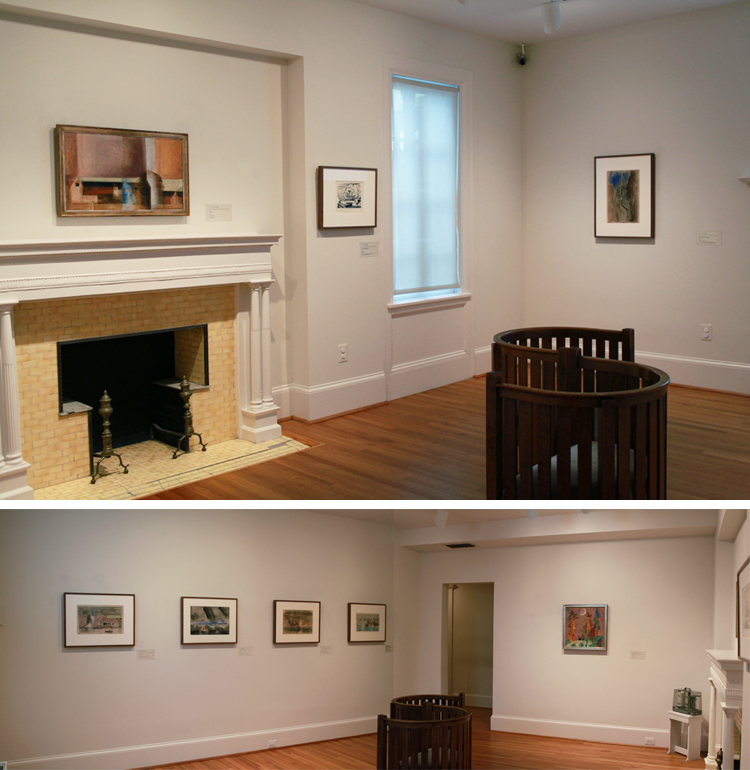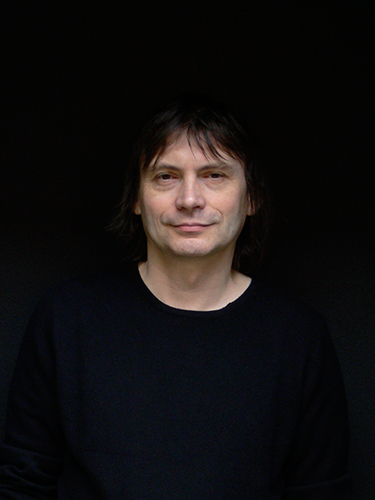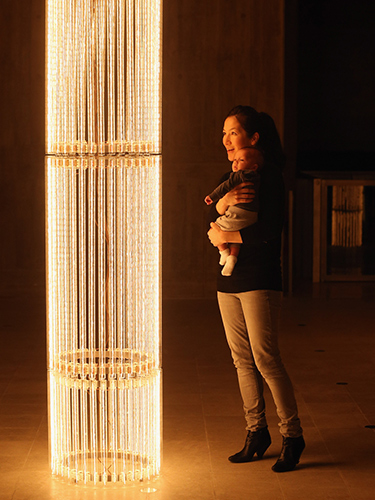
Sijae Byun, Wind #7 in Jungle, 2013. Acrylic and ink on silk, 50 1/2 x 37 1/2 inches. The Phillips Collection. Acquired with funds from Hank and Carol Brown Goldberg
Following up on the successful purchase of our first work by a contemporary African artist, Aimée Mpane at last year’s (e)merge art fair (made possible by Gallerist’s Herb and Dorothy Vogel Award), one of our enthusiastic and generous trustees, Carol Brown Goldberg and her husband Hank, donated funds to purchase a work by an emerging artist from this year’s (e)merge art fair.
Once again, our director Dorothy Kosinski, my colleague Vesela Sretenovic, and I were given the task to select a work from the fair. We each spent hours roaming the rooms and corridors at the Capitol Skyline Hotel that were taken over by galleries and independent artists, but kept coming back to an installation of intriguing paintings on silk by a young Korean artist, Sijae Byun, that were on view in the room occupied by the Washington Project for the Arts, an independent organization that since 1975 has served as a catalyst for emerging art. One painting in particular stood out for all of us: Wind #7 in Jungle (2013)—an aggregation of painted biomorphic shapes and moiré patterns produced by the superposition of multiple layers of pale purple silk. The artist, who received her training at Kookmin University, Seoul, Korea and at the School of Visual Arts in New York, and is now based in Maryland, derives much of her imagery from the relationship of nature and architecture, inspired by the philosophical and religious tradition of Daoism, best known through its most influential text, the Chinese Tao Te Ching or Daodejing.
Sijae Byun’s painting is not the first work by a Korean artist to enter The Phillips Collection. The Phillips owns a painting by the pioneering abstract painter Kim Whan-ki (1913–1974), 27-II-70 (1970) and four photographs by the Korean photographer Nikki S. Lee. Interestingly, Duncan Phillips’s first transatlantic journey in 1910 was not to Europe, but an extended family vacation to Asia that was primarily spent in Japan. It had a profound and lasting influence on Phillips, sparking a lifelong interest in merging an Eastern aesthetic with a Western sensibility in his own collection by acquiring American and European works that were attuned to Japanese formal values. In an article titled “The Problem of Art in Japan,” written in 1907 while he was a senior at Yale University, Phillips defined the principal difference between Western and Japanese art: “With us man is the cynosure of artistic eyes, while with them he is vouchsafed less attention than any bit of natural beauty, such as a spray of grass or a spring of cherry blossoms. Nature, not man is ever his inspiration.”
I believe that there is a good chance that Duncan Phillips would have approved of Sijae Byun’s painterly synthesis of natural beauty and man-made structures.



